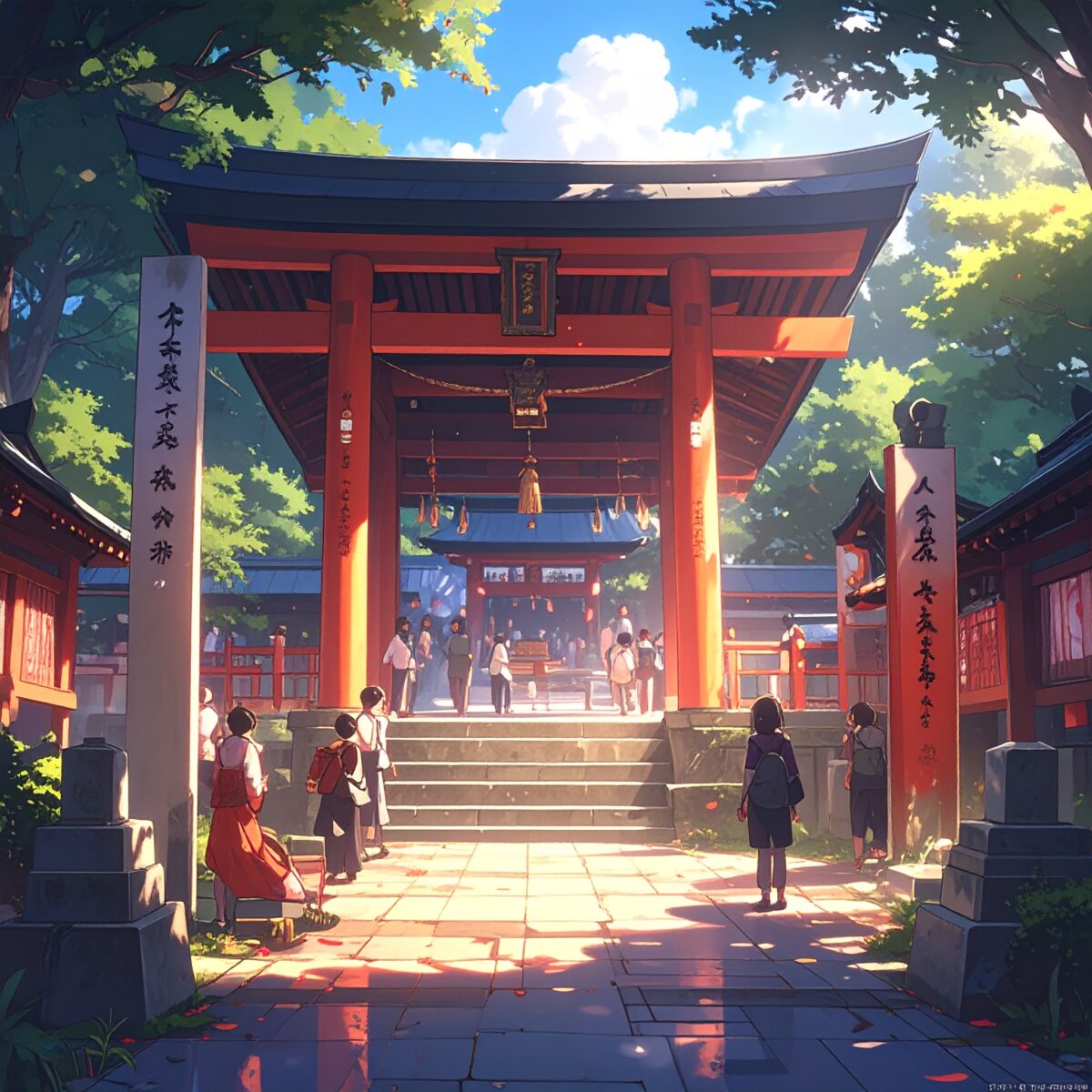Scattered across Japan, shrines quietly reside within towns and cities, often nestled in peaceful groves, surrounded by carefully preserved architecture. What strikes visitors immediately is just how effortlessly photogenic these places are. Simply raising your smartphone and tapping the shutter captures postcard-worthy images. For photography lovers, Japanese shrines are a true treasure trove of visual beauty.
The architectural elegance is the first to catch the eye: vivid vermilion torii gates, lacquer-black temple doors, and sacred paper streamers fluttering gently in the breeze. Bathed in natural light, these elements maintain a perfect balance of color and form, shifting subtly with the seasons and time of day—from the gentle morning glow to the golden hues of dusk. No matter the moment, each photo captures a serene, spiritual stillness.
The layout of the grounds feels almost artistically composed. Walking down the shrine path, you’re guided by rows of lanterns, moss-lined stone walkways, and sun-dappled trees, all leading your gaze toward the main shrine. The harmony between architecture and nature creates stunning visual compositions where tradition and tranquility meet.
Each season adds its own story to the shrine’s atmosphere. In spring, cherry blossoms bloom in full glory, their petals drifting softly along the pathways. Summer brings lush greenery and the echo of cicadas, while autumn transforms the grounds with vibrant foliage. In winter, a crisp silence settles, with frost and snow lightly framing the torii and rooftops in white. These changing scenes provide endless inspiration for every photographer.
Look closer and you’ll find even more to capture—rippling water in the purification basins, the way omikuji (fortune slips) are tied, the shapes of bells and ema (votive plaques). These quintessentially Japanese elements add richness to any frame, whether featured as focal points or as part of the background. The fine wooden details of shrine architecture, especially, are stunning when captured in black and white, revealing depth through light and shadow.

When photographing people at a shrine, the space itself enhances the subject. While traditional attire like kimono naturally blends with the setting, even casual clothing takes on a sense of quiet elegance against the backdrop of sacred architecture. Whether it’s a portrait under a vermilion torii, a candid shot near votive plaques, or a silhouette walking along the shrine path, every frame tells a story—turning a single travel moment into a poetic memory.
Shrines are places of calm and reverence, and this atmosphere naturally brings grace to those who visit. That refined mood is reflected in the photos, resulting in images that aren’t flashy but rich with depth. Sometimes, when posted on social media, these photos are met with comments like “It looks like a scene from a movie”—a testament to the serene strength inherent in the shrine itself.
Of course, capturing such beauty requires respect. Shrines are sacred spaces, so it’s essential to follow proper etiquette—avoid entering restricted areas, refrain from using flash or loud voices, and pause photography during prayer rituals. With a mindful lens, you’ll connect more deeply with the space and uncover a more authentic kind of beauty.
Japanese shrines are not just sightseeing spots—they are immersive cultural experiences. Each step you take becomes a frame; each view, a blend of nature and tradition. To visit, to walk, to feel, and to capture—that very act becomes a living record of your journey.
So next time you visit Japan, make time to explore as many shrines as you can. Let your lens seek out the silence, the detail, and the layered history. The images you bring home won’t just be beautiful—they’ll be timeless memories etched in the soul.




